Multi-Machine Fabrication
Multi-Machine Fabrication
Benjamin Felbrich1, Nikolas Früh2, Marshall Prado1, Saman Saffarian2, James Solly2, Lauren Vasey1, Jan Knippers2, Achim Menges1
1ICD, University of Stuttgart
2ITKE, University of Stuttgart
Fiber composite materials have tremendous potential in architectural applications due to their high strength-to-weight ratio and their ability to be formed into complex shapes.
Novel fabrication processes can be based on the unique affordances and characteristics of fiber composites. Because these materials are lightweight and have high tensile strength, a radically different approach to fabrication becomes possible, which combines low-payload yet long-range machines—such as unmanned aerial vehicles (UAV)—with strong, precise, yet limited-reach industrial robots.
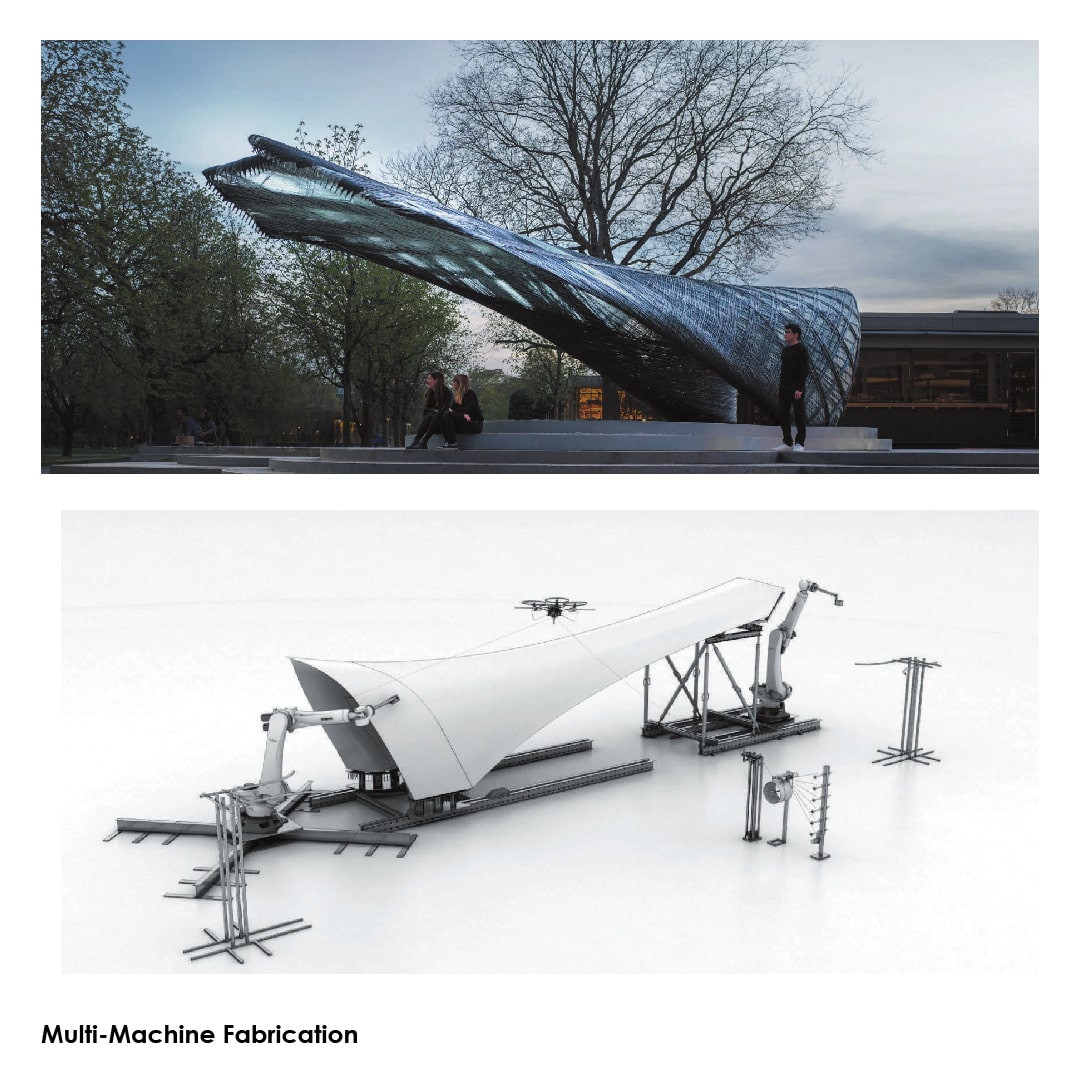 This collaborative concept enables a scalable fabrication setup for long-span fiber composite construction. This paper describes the integrated design process and design development of a large-scale cantilevering demonstrator, in which the fabrication setup, robotic constraints, material behavior, and structural performance were integrated in an iterative design process.
This collaborative concept enables a scalable fabrication setup for long-span fiber composite construction. This paper describes the integrated design process and design development of a large-scale cantilevering demonstrator, in which the fabrication setup, robotic constraints, material behavior, and structural performance were integrated in an iterative design process.
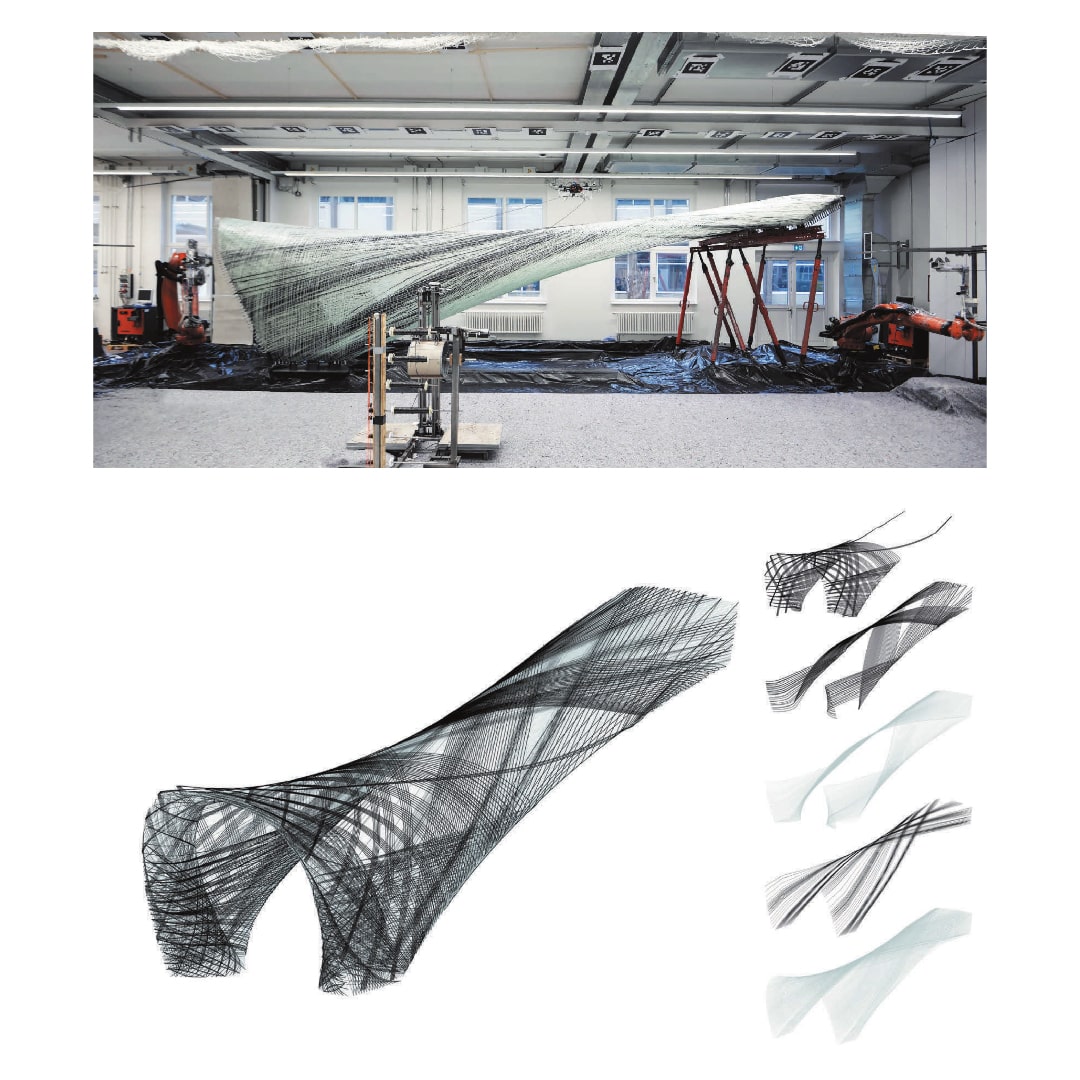 For long-span structures, where the material’s strength-to-weight ratio is of high concern, lightweight fiber composites provide unparalleled performance in applications within the nautical, aerospace, and automotive industries.
For long-span structures, where the material’s strength-to-weight ratio is of high concern, lightweight fiber composites provide unparalleled performance in applications within the nautical, aerospace, and automotive industries.
The potentials within architecture, however, largely remain unexplored. Traditional methods of fabrication require full-scale surface molds and often restrict the process to serialized production of identical parts.
There are a lack of adequate fiber composite fabrication processes to produce at an architectural scale without incurring unnecessary material or labor costs or compromising the design freedom, system performance or adaptability required for the architecture and design industries (Menges and Knippers 2015).
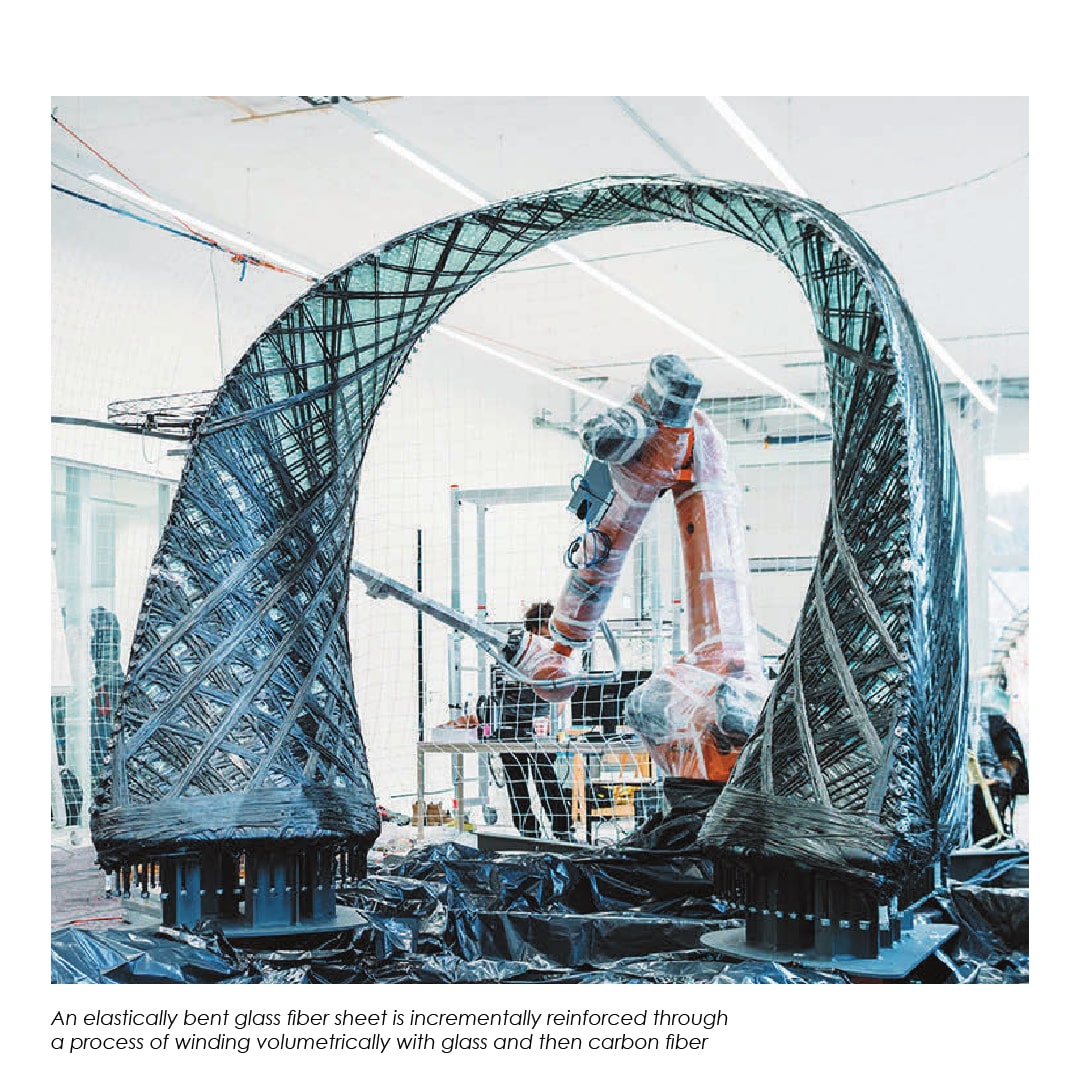 Research at the ICD and ITKE has explored integrative computational design, simulation and fabrication processes for fiber composite construction without the need for wasteful, and potentially costly, surface molds or formwork (Reichert et al. 2014).
Research at the ICD and ITKE has explored integrative computational design, simulation and fabrication processes for fiber composite construction without the need for wasteful, and potentially costly, surface molds or formwork (Reichert et al. 2014).
The previous work investigated large-scale coreless filament winding (Knippers et al. 2015), modular coreless filament winding and fiber placement on pneumatic bodies.
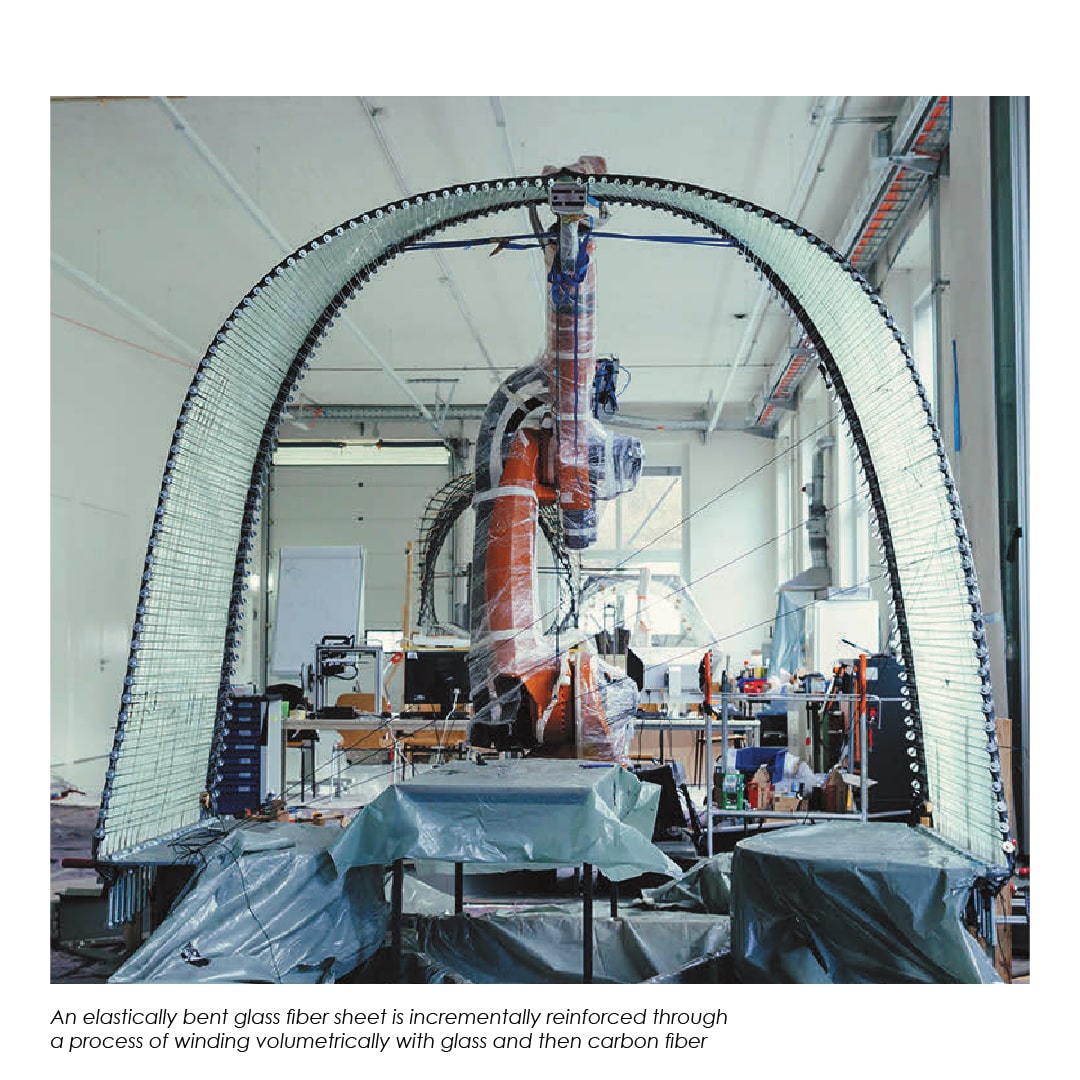 These novel robotically driven manufacturing processes have been utilized to create highly differentiated multilayered structures, functionally integrated building systems and large element assemblies, therefore introducing greater design freedom in working with this relatively formable material.
These novel robotically driven manufacturing processes have been utilized to create highly differentiated multilayered structures, functionally integrated building systems and large element assemblies, therefore introducing greater design freedom in working with this relatively formable material.
However, the scale of these earlier investigations and the ability to utilize a continuous fiber structure has been limited by the working space of the robotic setup.
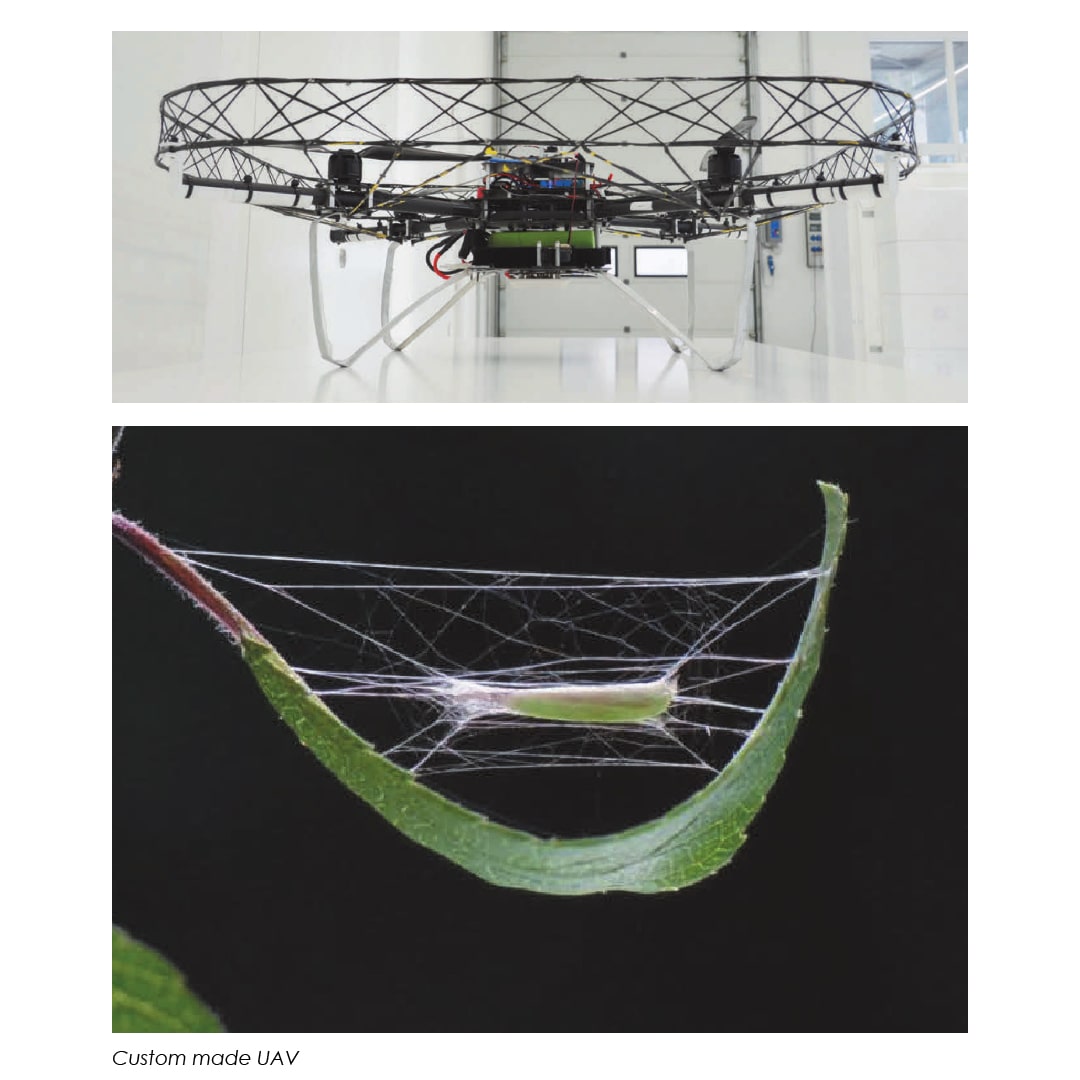 Existing research has investigated the potential for fabricating architectural systems with unmanned aerial vehicles. In Flight Assembled Architecture, quadrotor helicopters were developed to autonomously stack lightweight polystyrene bricks (Willman et al. 2012).
Existing research has investigated the potential for fabricating architectural systems with unmanned aerial vehicles. In Flight Assembled Architecture, quadrotor helicopters were developed to autonomously stack lightweight polystyrene bricks (Willman et al. 2012).
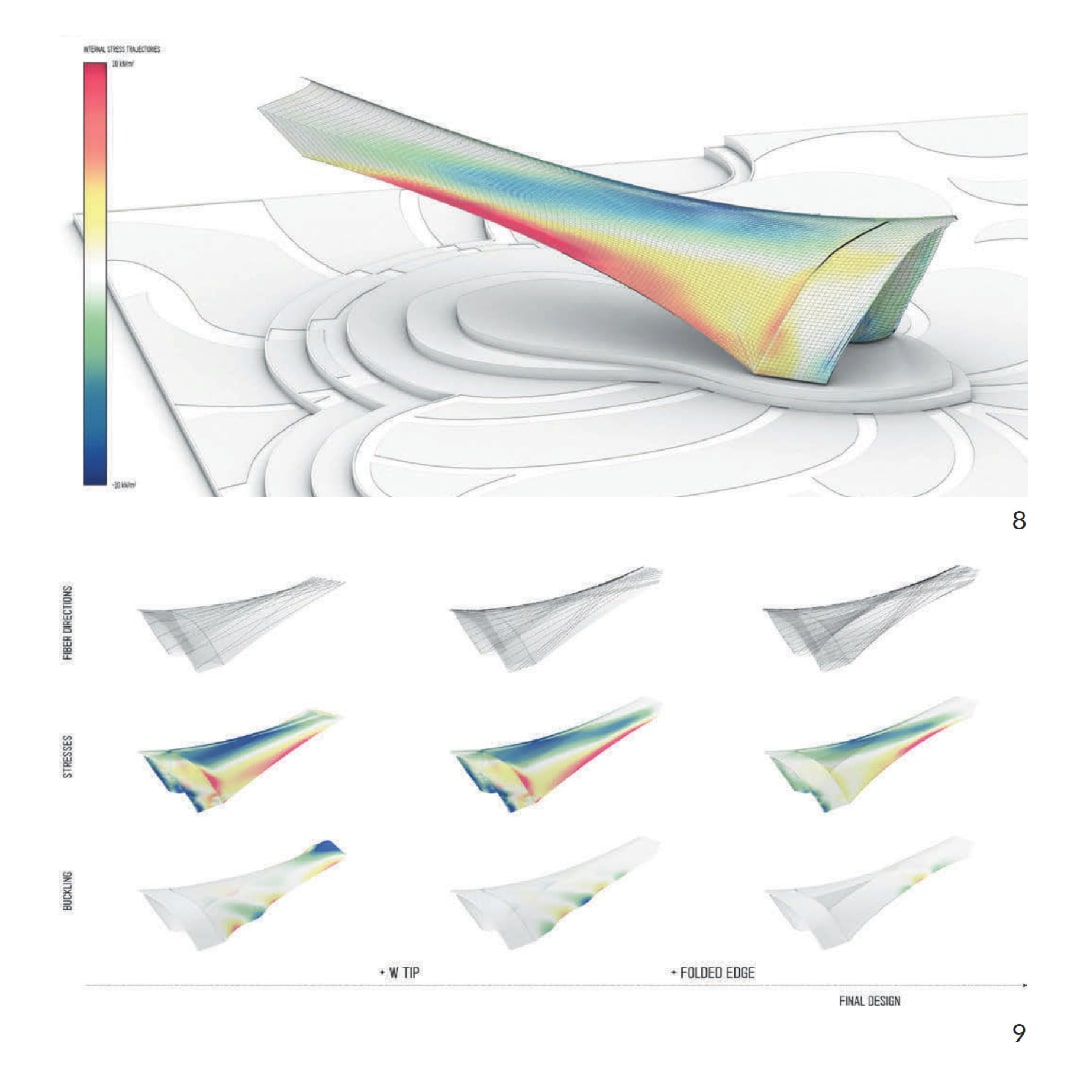 More recently, flying robots were used to weave tensile bridge structures (Mirjan et al. 2016). While these previous projects demonstrate advanced drone control and the architectural potential therein, the limitations of drones—in particular, their relative imprecision, low payload and constrained working area due to the utilized motion tracking system—limited the possible tectonics of the resulting material systems.
More recently, flying robots were used to weave tensile bridge structures (Mirjan et al. 2016). While these previous projects demonstrate advanced drone control and the architectural potential therein, the limitations of drones—in particular, their relative imprecision, low payload and constrained working area due to the utilized motion tracking system—limited the possible tectonics of the resulting material systems.
 In contrast, this investigation attempts to use the UAVs merely for material transportation, where the precision and payload required for the placing and tensioning of material is provided by industrial robots. Furthermore a more scalable localization method allows for an easily extendible area of operation.
In contrast, this investigation attempts to use the UAVs merely for material transportation, where the precision and payload required for the placing and tensioning of material is provided by industrial robots. Furthermore a more scalable localization method allows for an easily extendible area of operation.




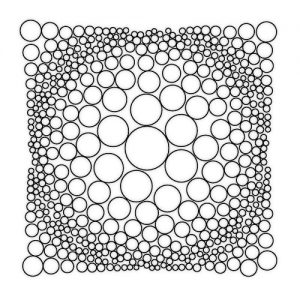























Comments